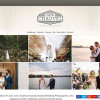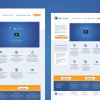We’ve been talking with a prospective new client recently about some consulting work for their website and digital marketing. As normal we presented our usual spiel on pricing – the one where I explain that we bill everything on an agreed project price (usually paid 50% up front and 50% on final delivery).
I haven’t billed any digital work on an hourly rate since I first moved from Sydney to Barcelona in 2006. Everything I did in Europe and the UK was either on day rates or (where possible) fixed project prices. Something that I truly believe is this: a fixed project price is the only transparent way for both a studio and their client to engage in a fair and open business relationship.
On one hand clients often say things like, “but i’ve heard that a project prices have ‘fat’ built into them and that I might end up paying more..” My only answer to this is: “if you know exactly how much its going to cost, surely thats the absolute best way to budget for it?”
Obviously, for this to work, there has to be a level of trust between us and the client – this is a trust that we work hard to build. However, it’s worth noting that as well as the client trusting us to deliver the project, we are also trusting that the client will pay the final invoice. This two-way trust relationship is the cornerstone of the client/studio business relationship.
Paying for Time: the inherent risks…
Particularly for small businesses, there are many risks attached to open ended pricing (be it by day or by hour). Most significantly: if the studio runs out of budget for your project and you are only 70% done, they will invariably move on to greener pastures and prioritise new client work over the completion of your work. Conversley, imagine a scenario where the studio has completed 40% of a project only to discover that the client has no cash or wants to “put the project on hold” – it’s extrememly damaging to the studio’s cashflow (especially in a small studio environment).
More importantly for the client, the risk here is that without a clear agreement as to the final price for a project, they are open to paying an undetermined amount for the project. This is a very one-sided arrangement, and in reality it works entirely in favour of the studio. Once a client has invested 90% of their budget in a studio or a freelancers “time” they are now in a position where they can’t negotiate – if that studio / freelancer wants to charge more, there’s almost nothing the client can do about it.
Project Pricing: why we prefer it…
We estimate all our projects as clearly as we can, we outline the requirements and deliverables in a Statement of Work and we outline our exact terms in a contract – for every client. Clarity and transparency are key to keeping both parties happy. We have plenty of experience in estimating the costs of design & development projects, so we specify and price them accordingly and then we take the risk if our estimate is wrong.
Obviously, we have to charge for significant changes in scope after a project has begun, however in general, we price our projects so that there is a degree of flexibility in our delivery options. We also do our best to be completely transparent with any changes that will affect the timing or cost of a project.
So? What’s your point?
The point here is that the reason we bill our work on fixed prices is that it helps us make sure both us and the client are on exactly the same page about the scope and requirements of the project. If a client agrees to a price and agrees to a 50% deposit, then we know they are serious about the project and we also know that we’ve done everything in our power to be transparent about the project cost.








